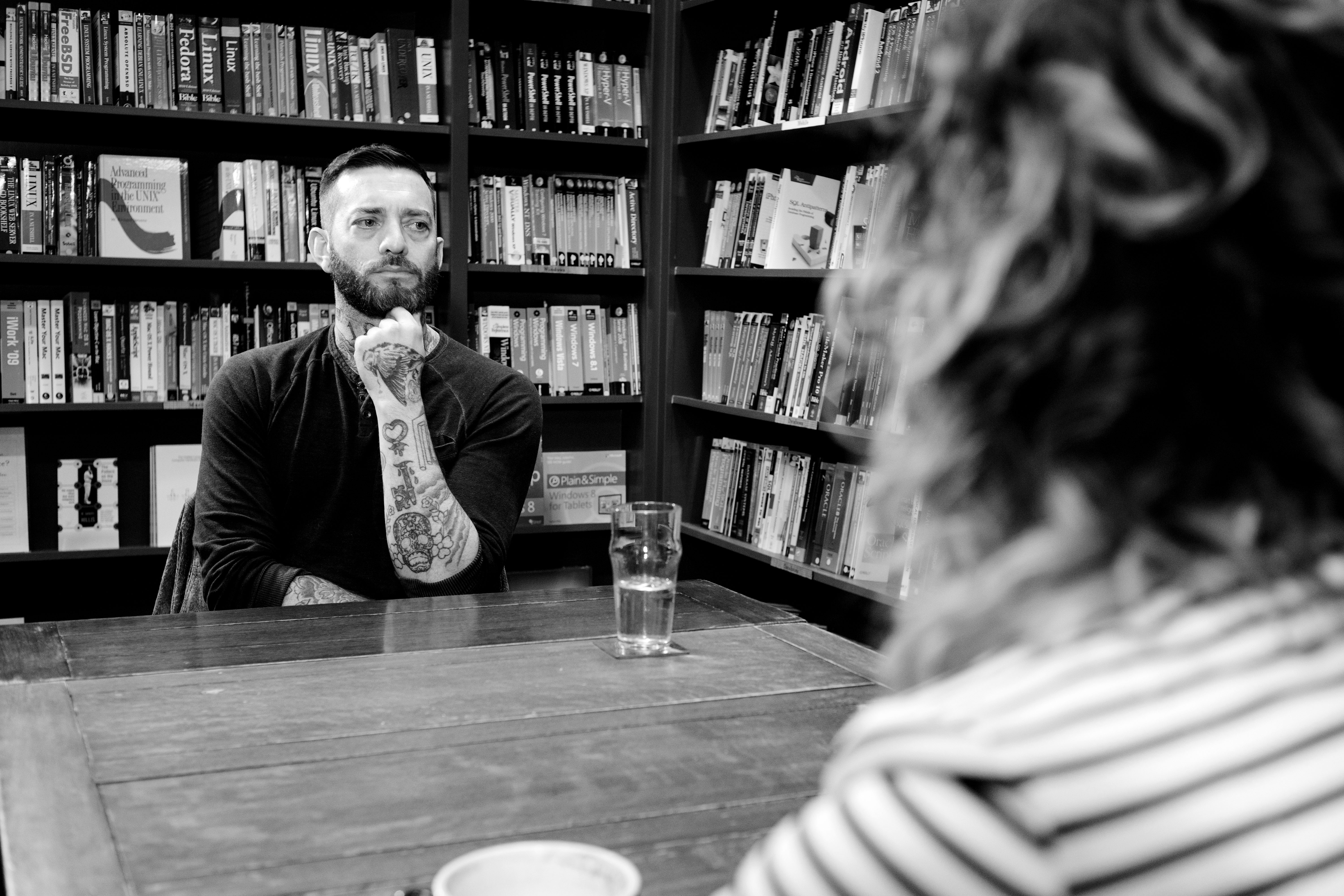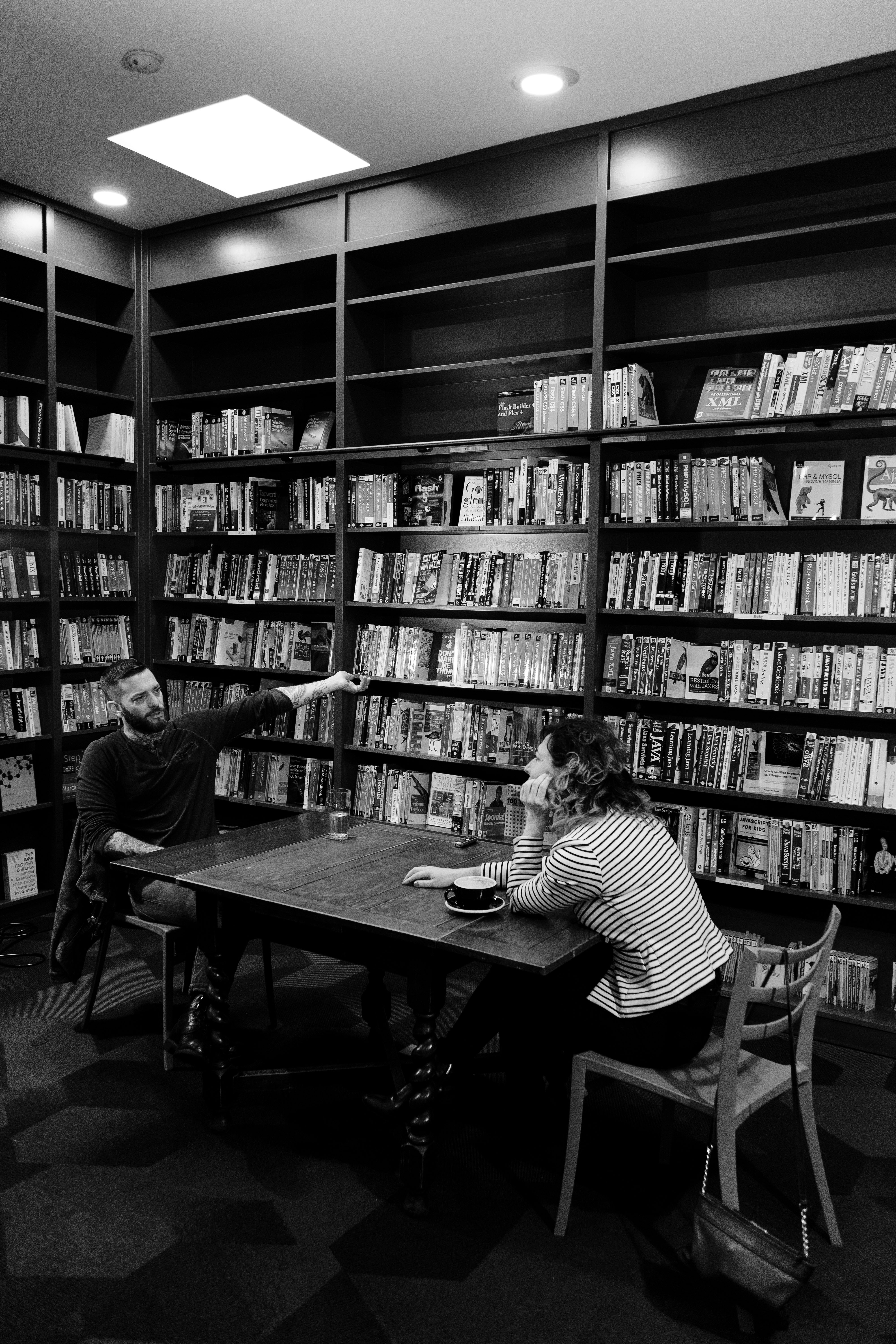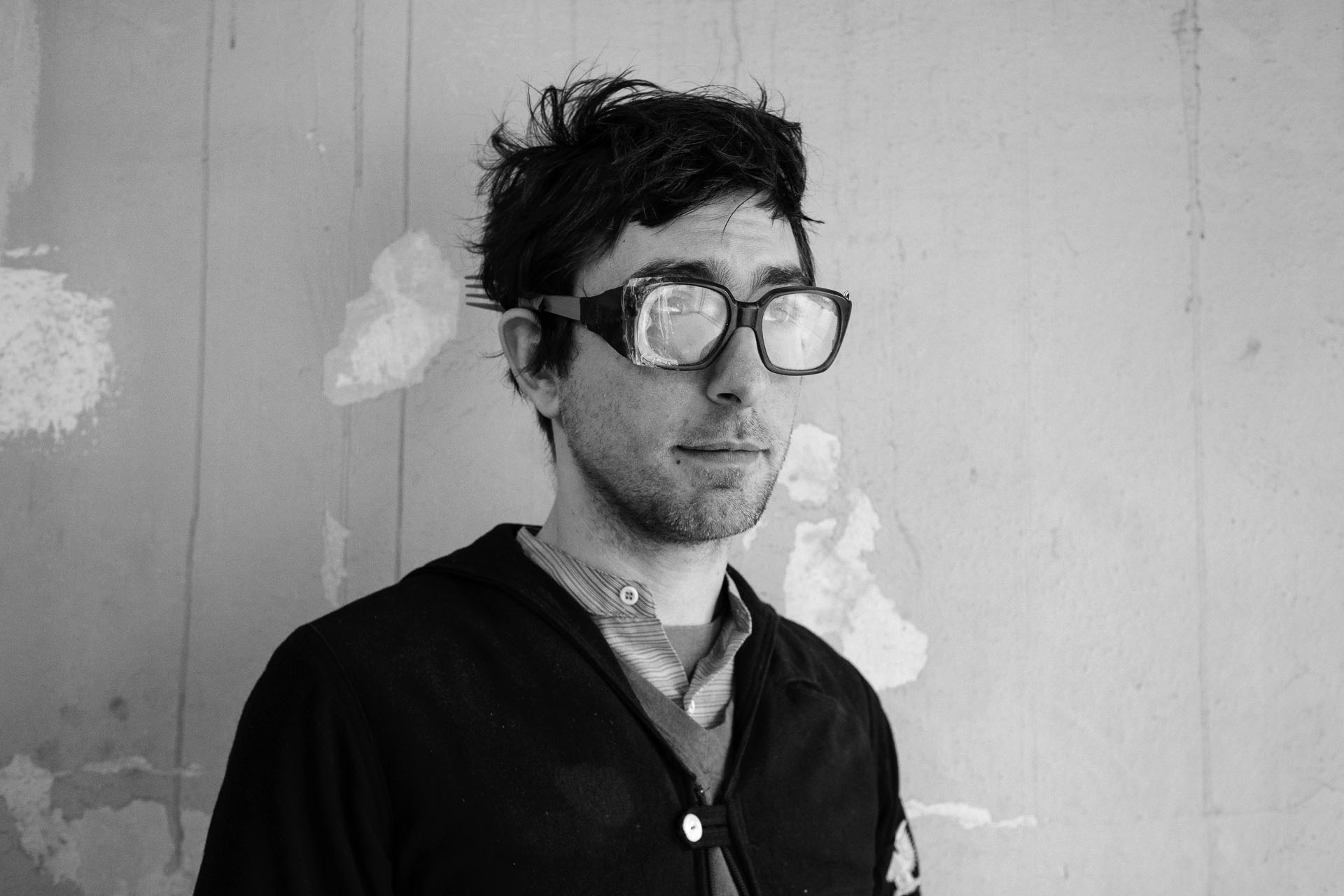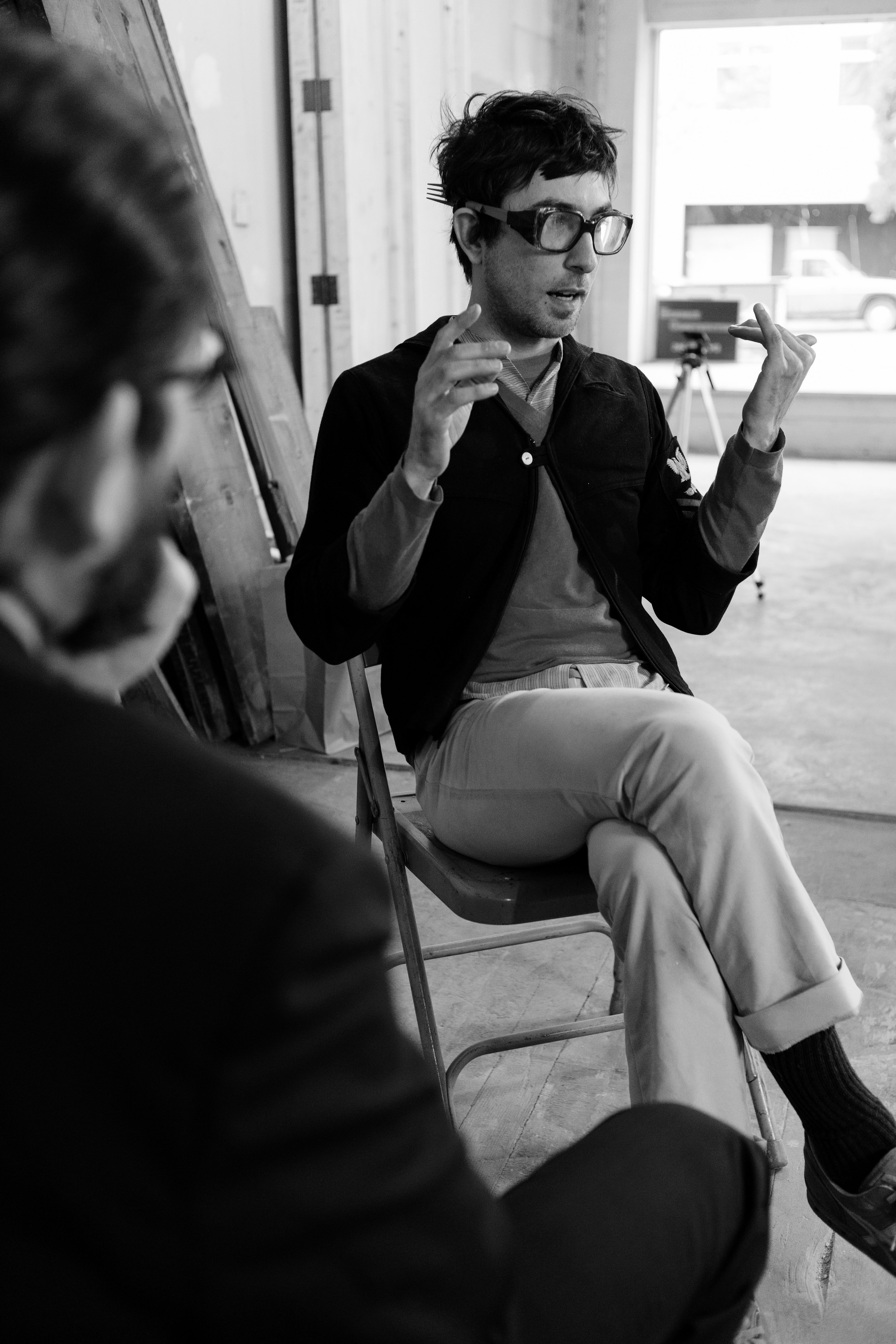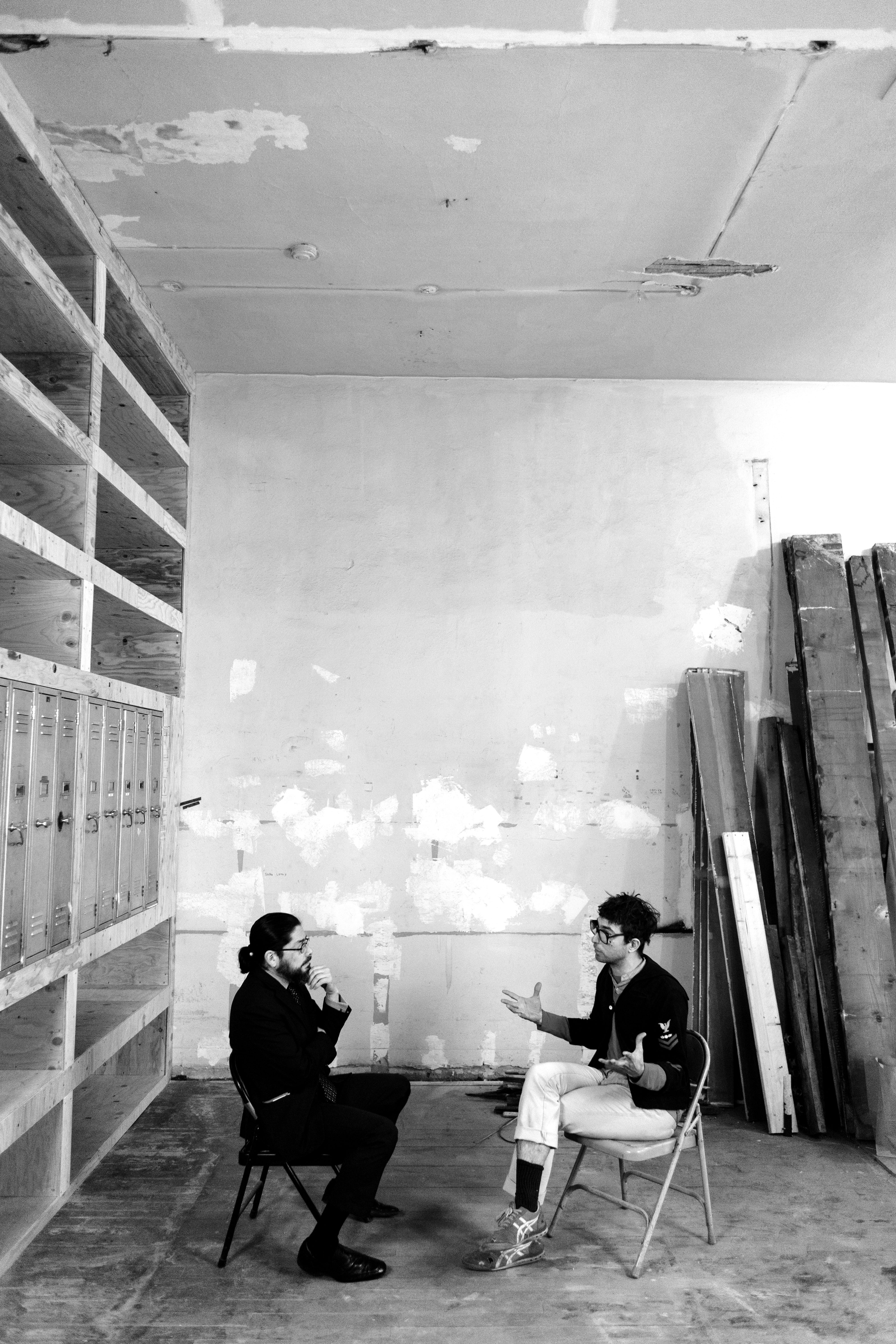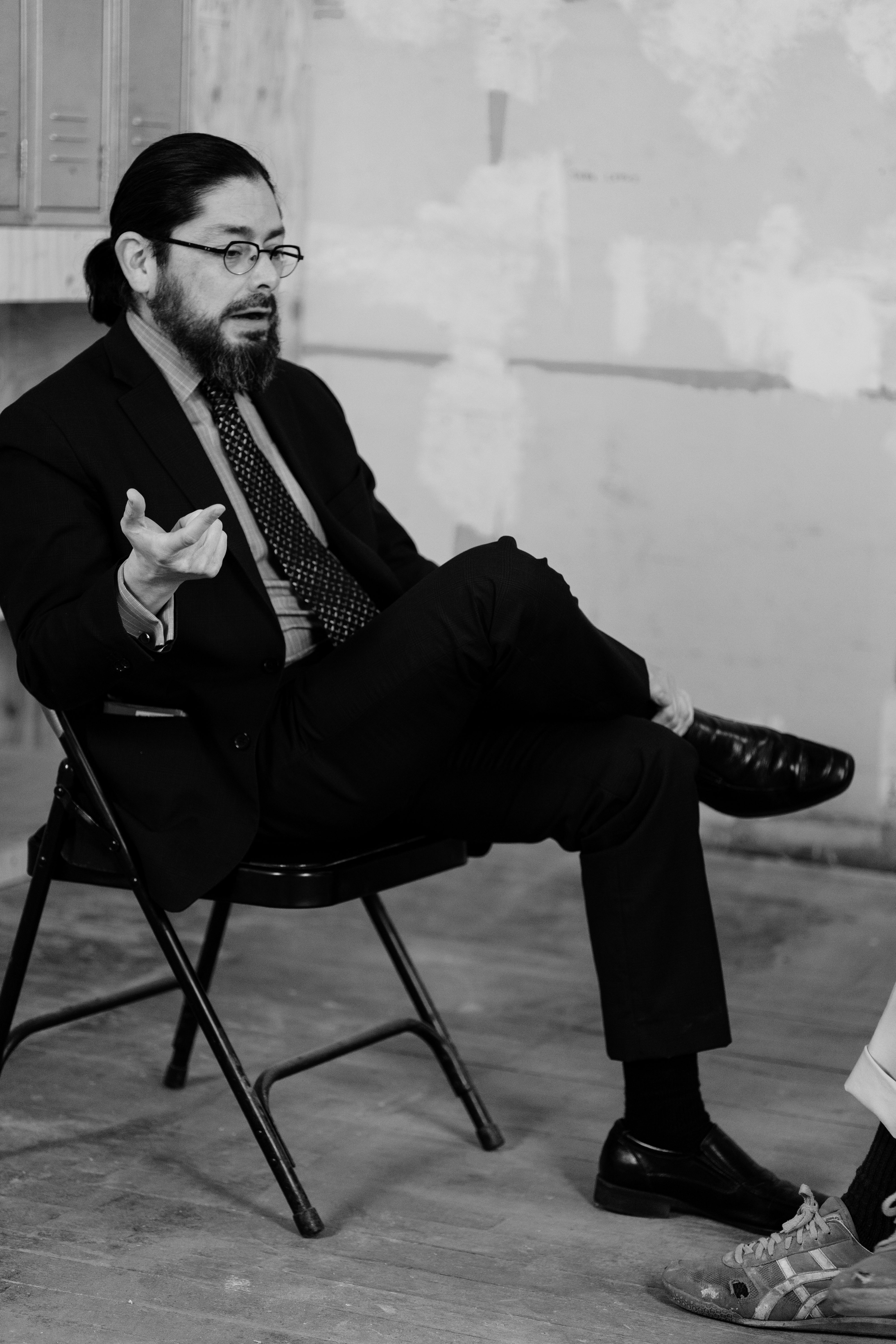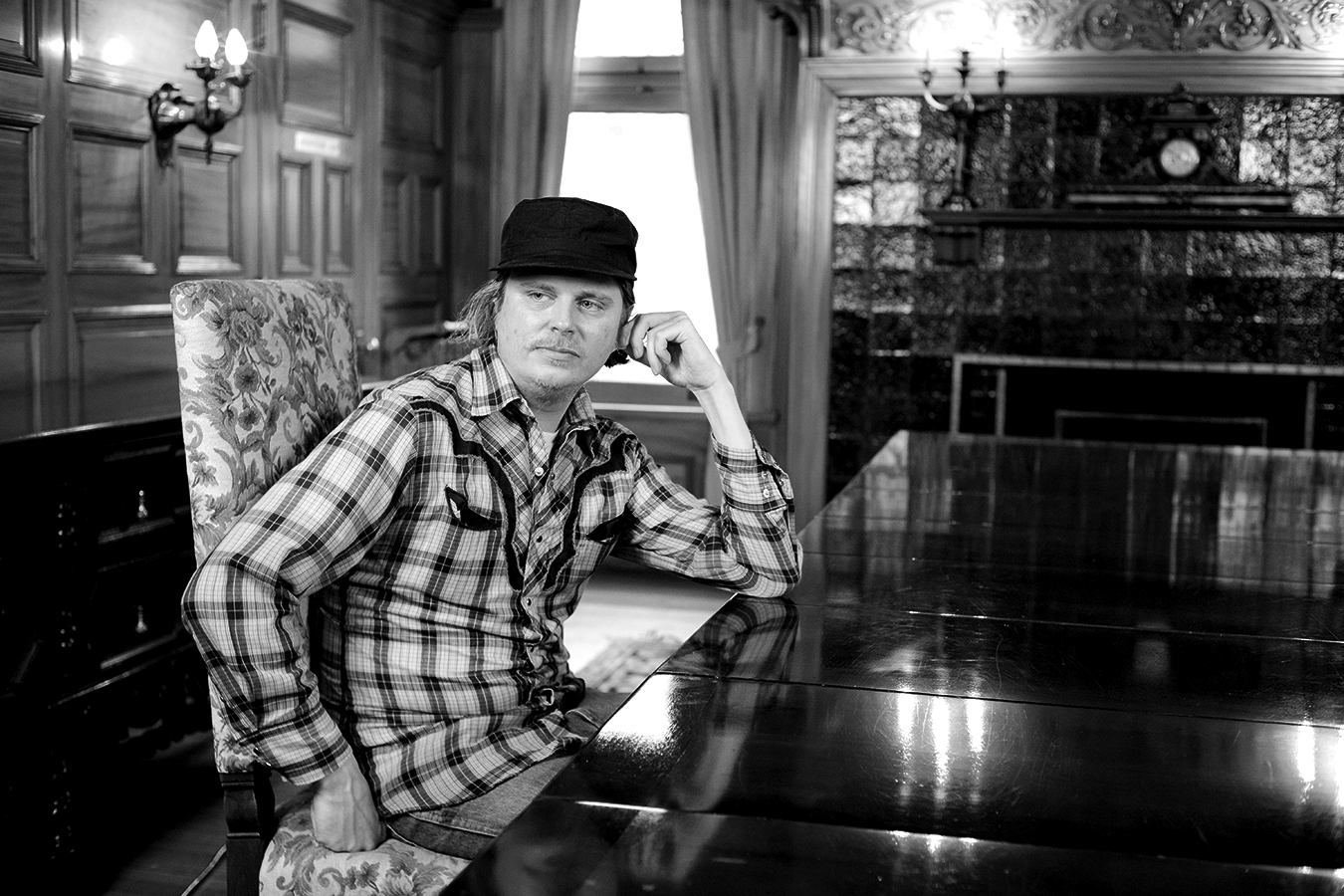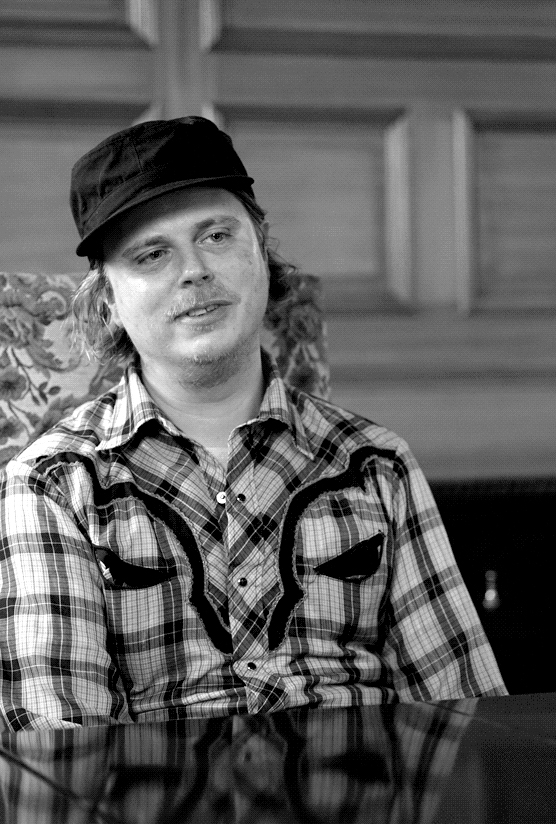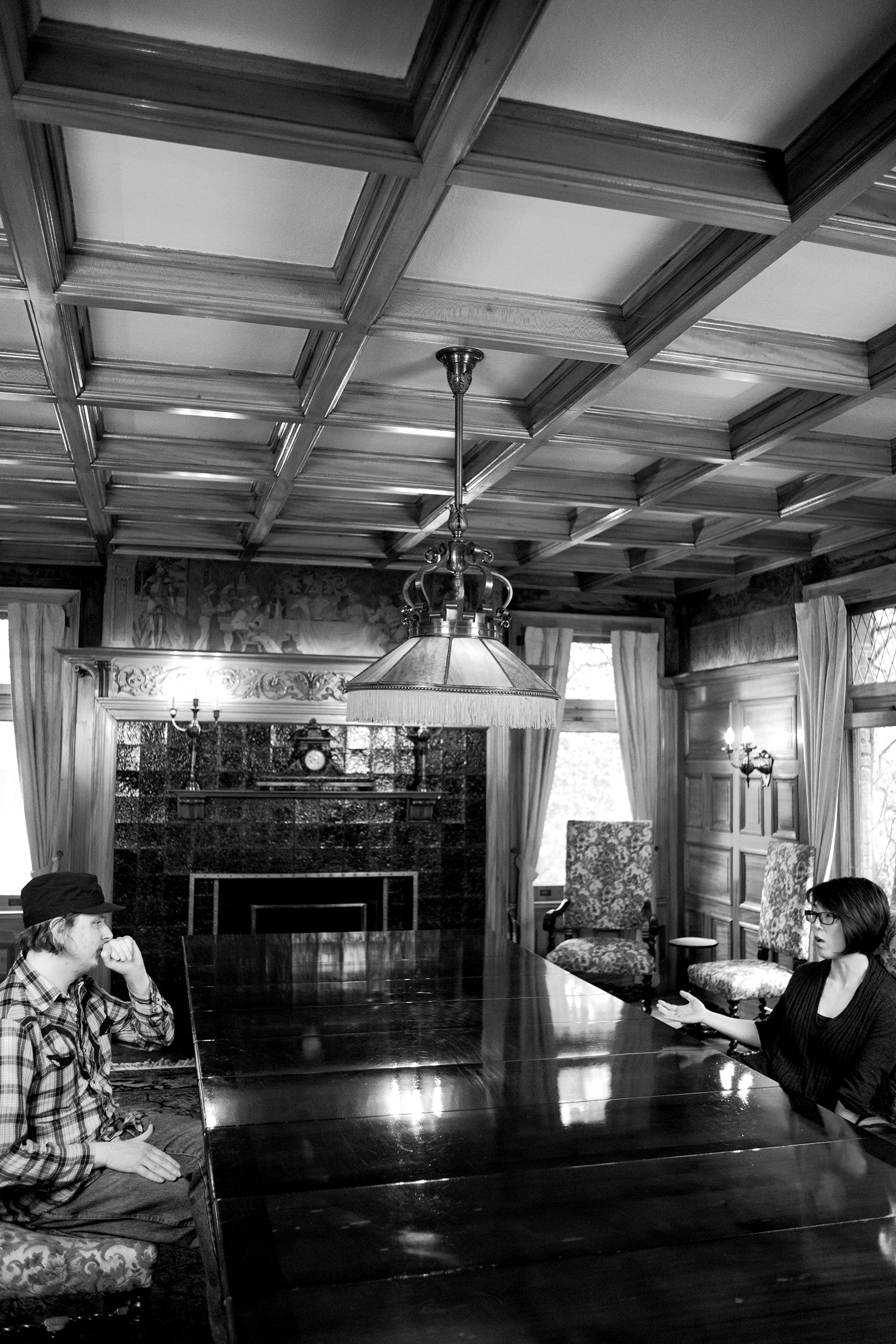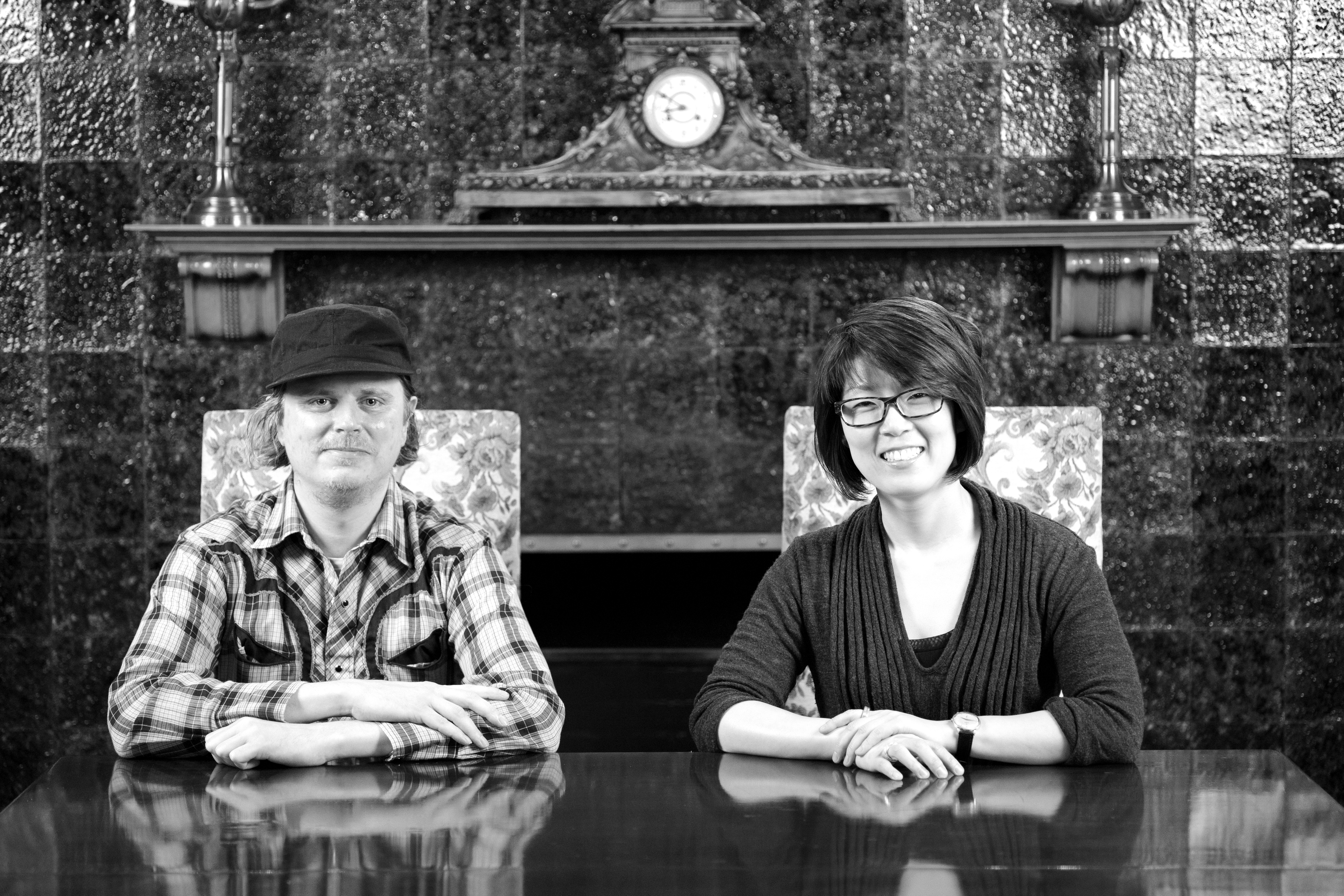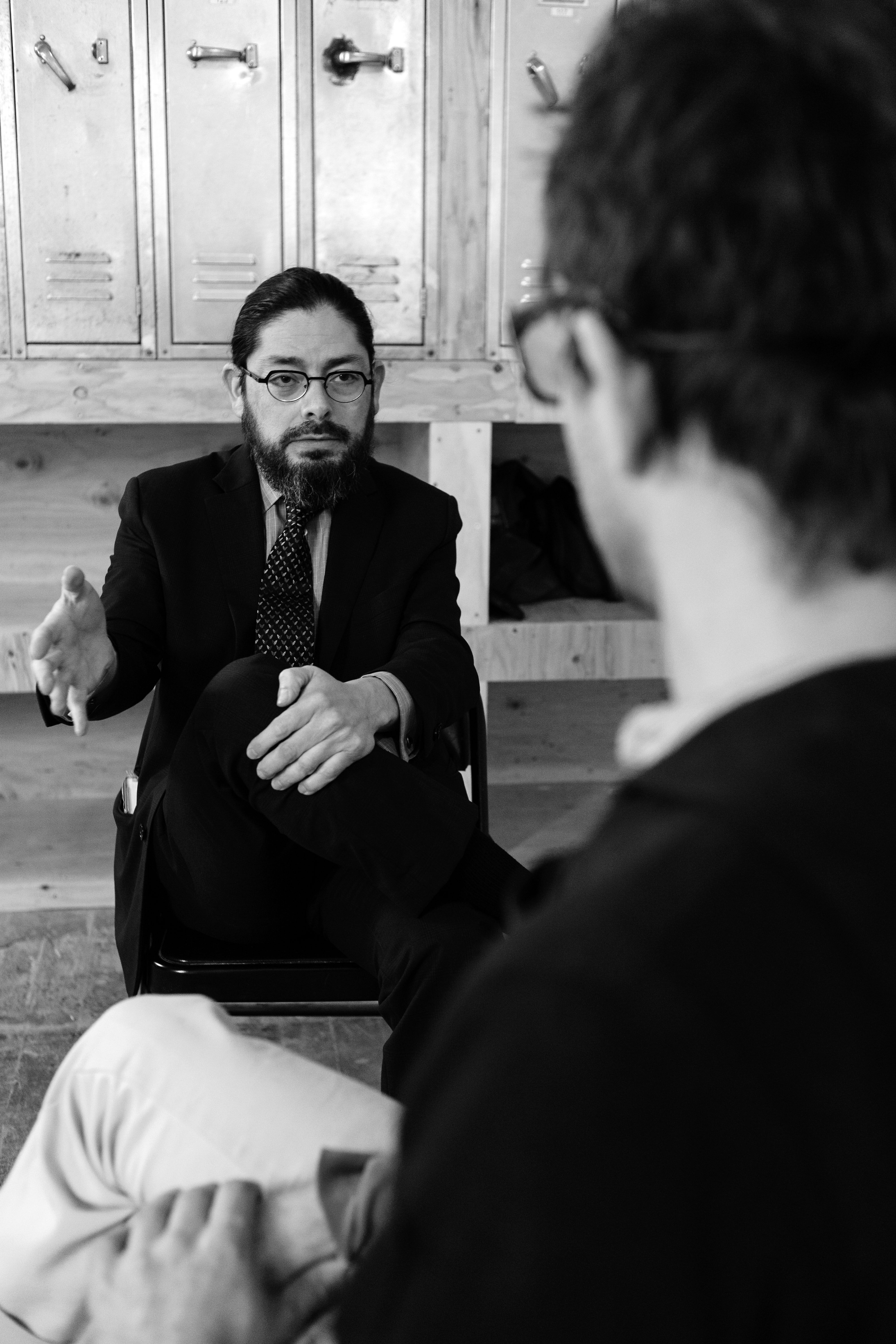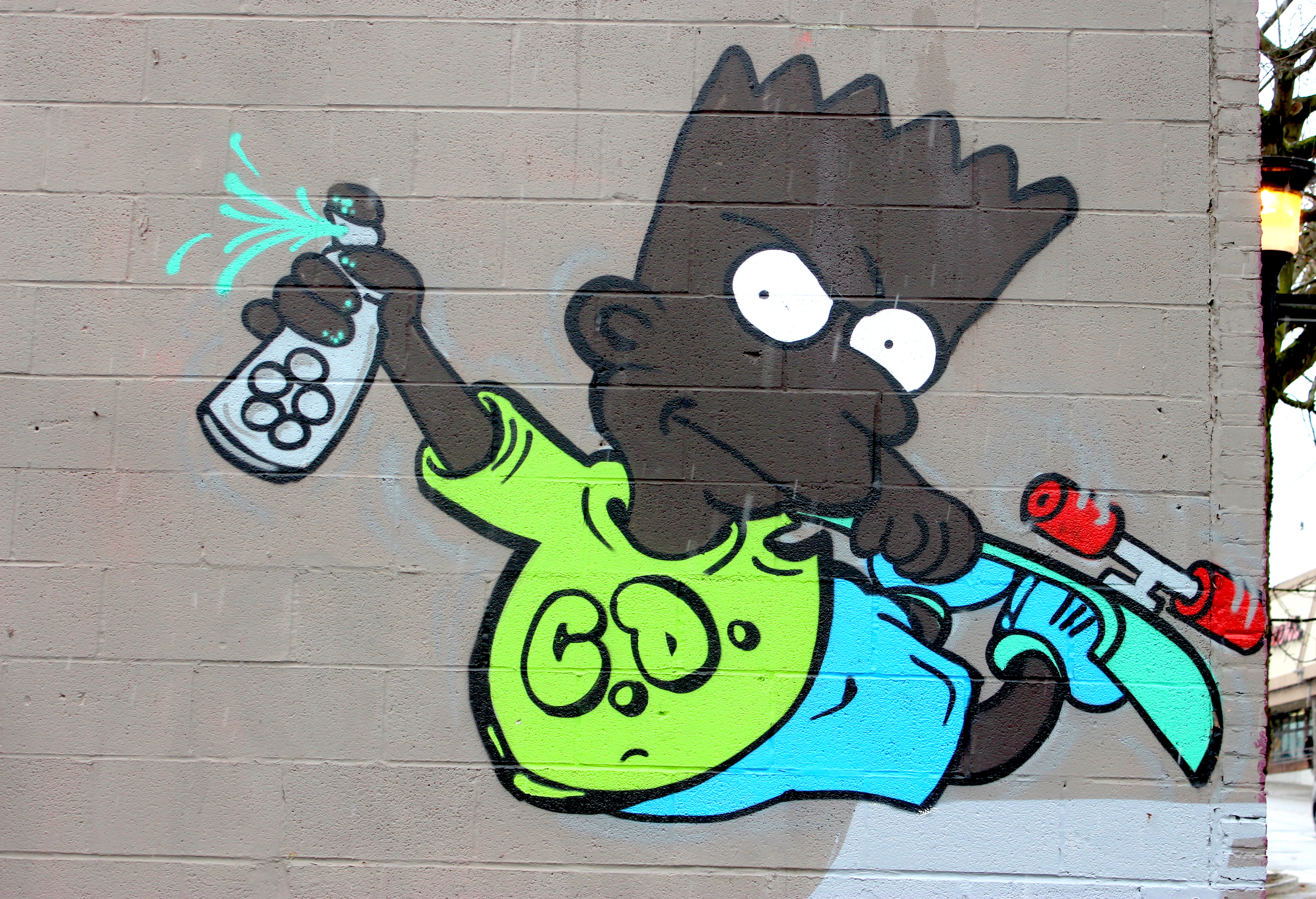Seattle is not an adolescent anymore.
In the early 1990s, our little port city hit puberty big-time. We got angsty. Everything Smelled Like Teen Spirit, and we were very proud of that smell. And then the growth spurts started happening. It was awkward.
Money started flooding into what used to be a simple, salty, blue-collar hideout. Money from this place called Microsoft that started making this thing called software in the ’80s. Money, most recently, from a giant orange “A” by the name of Amazon, an e-commerce company currently on track to employ seven percent of the city by shipping products all over the planet. Suddenly the world knew where to find Seattle on a map. Not only that, but many people were actually moving here—either to work for all this money or to embed themselves as artists, hoping to find community in that unique, scummy teen spirit that caught the world’s eye.
More than two decades later, Seattle is very quickly on its way to becoming a full-blown adult. Some might say it’s already gotten there. And like any arty teen confronting adulthood and the responsibilities that come with it, things are getting a little existential. Seattle is very vocally asking itself: How do I make money without selling my soul? Can I grow up without becoming the thing I hate (*cough cough* San Francisco *cough cough*)? Like most teens, from the ’90s onward, Seattle has defined itself in opposition to things. Now that it’s about to become an adult, it suddenly has to figure out what it aspires to.
In asking these important questions, the forces that initially kicked Seattle’s puberty into gear have broken into two culture-driving camps—art and tech money. The prevailing narrative in town says they will just never get along—they aspire to two very different Seattles, one seeing a city at the cusp of a rebirth, the other a city on the brink of an irrevocable cultural death. Staring down that rapidly approaching future, these two camps have resorted to yelling at each other—sometimes in person, sometimes through art, but most of the time, unsurprisingly, on the Internet.
But adults shouldn’t yell at each other. They should sit down and have grown-up conversations.
What you are about to read is a last ditch effort at conversation. Seattle Weekly unceremoniously shoved these two Seattles together and asked them to talk to each other. No shouting into the ether allowed. We wondered if maybe the three pairs of leaders we brought together could figure this whole Seattle thing out, since, you know, rapidly approaching irrevocable cultural death and all that. Here is what happened. KELTON SEARS
JOHN CRISCITELLO vs. REBECCA LOVELL
A tattoo artist, painter, and filmmaker, John Criscitello launched a guerrilla street-art series in 2014 by wheat-pasting the image of a giant penis over a Jagermeister ad on Capitol Hill. His name has since become international shorthand for the cultural effects gentrification has had on Seattle, reaching iconic status via wildly popular articles from The Seattle Times, The Stranger, and, most recently, UK publication The Guardian. Decrying the decline of Capitol Hill as an affordable, alternative “gayborhood,” Criscitello’s wheat-paste poster art depicts drunken, tiara-wearing “Woo Girls” and violent, homophobic “Bros” from Amazon and the tech industry at large. He blames the lack of awareness and general privilege of these Seattle newcomers for the city’s cultural decline—a message he summed up most directly in a recent poster bearing the message “TECH MONEY KILLS QUEER CULTURE DEAD.” For the past five years he’s lived on Capitol Hill, where he maintains an active art studio producing work he sells online and in local galleries.
Rebecca Lovell serves as the startup liaison for the city’s Office of Economic Development, a position that didn’t exist even two years ago. Her job is to foster startup communities and entrepreneurs in Seattle’s booming tech industry—many of whom are new to the city—and help them connect, find mentors, and develop business, marketing, and sales strategies for their burgeoning tech projects. Before taking the position, Lovell taught venture-capital investing for seven years as a professor in the University of Washington’s MBA program and served as the chief business officer for GeekWire from 2011–13, helping it become Seattle’s leading tech-news resource. Lovell was raised by two “blue-collar studio-artist parents” on Capitol Hill, where she still lives.
The two met to talk at Ada’s Technical Books on Capitol Hill, where they were surrounded by literature on JavaScript, HTML, and C++. Before the discussion, Criscitello quipped that he’d “never understood this place.” Although he’d never met Lovell, he said he recognized her from around the neighborhood because of her “fabulous hair.”
Criscitello
: Seattle does feel like a city that’s evolving. But it’s sad because it feels like it’s being built for only one small segment of people. And fuck everybody else.
Lovell
: I’m terrified of what is happening in our neighborhood and community at large. I’m actually across the street from 12th Avenue Arts on 12th and Olive myself. And I don’t like going out on Friday and Saturday nights. I’m like, “Who are these people?” But in terms of my day job, I work with startup entrepreneurs, with technologists—people saying “I’m going to build something. I’m going to put my baby out in the world, and my baby will probably get rejected nine times out of 10.” That’s sort of what entrepreneurs go through. You’re an entrepreneur yourself. I’ve checked out your site.
JC: If you’re motivated and you’re talented, there is no reason why you can’t utilize this technology to have a career of your own.
RL: Right, yeah. You’ve got your own e-commerce site.
JC: You’re probably not going to make six figures—most people aren’t—but you’re going to be happy. And I think happiness is really what working’s about. Eventually. I don’t really know how happy some of these people are in their jobs at Amazon. I have a feeling there’s a little bit of malaise going on over there.
RL: I feel like there’s some connection points between scrappy starving startups and scrappy starving artists that are a separate experience from the Amazonians and Microsofties of the world. That said, I think one of my deepest concerns that I’m trying to address in my work is that this whole boom of technology that’s created prosperity has not been shared or equitable in any way. I’d love to see Amazon be a different kind of corporate citizen. Look at the impact on South Lake Union. The way it is now—that’s not how the plan . . . err, that wasn’t the vision with zoning.
JC: It’s a cautionary tale. So we’ve seen the wave coming, and Seattle’s not as warm and fuzzy as San Francisco.
RL: You don’t think so?
JC: I feel like San Francisco sort of just laid down and let it happen. I don’t think that’s going to happen so much here.
RL: Good! I’d like to think we [technologists/entrepreneurs] were all sort of open to saying “Yeah, what’s going on here? Like, how can we take the best practices from startups and see if there’s anything in that the art community can benefit from.” An example that came to mind for me was crowdfunding. Like, how do you get your stuff funded? And the stat that I remember is that in 2013, Kickstarter had funded more arts projects than the National Endowment for the Arts. Back in the day it was the rich art-patron family, these fancy nobles who patronized the arts.
JC: It’s very Medici.
RL: Right, exactly. But now, you know, people with not a lot of money can fund campaigns in a more democratic way. So all right, Kickstarter funds tech projects, and it also funds art projects. So what are the other intersections we can find? How can this nouveau riche community that now lives in Seattle be supportive of the people that made Seattle what it is?
JC: I’ve been doing some reading on this, and the one take I got was that people in tech have computer-science degrees and not liberal arts or humanities degrees. So that sort of veers off and . . .
RL: I’m a history major. Liberal arts through and through [laughs].
JC: So there’s this sort of divide, it’s this sort of lunch table-ism of life. Right? Like “There’s the nerdy kids over there, and here’s the art-fag kids over here,” and these two tables are on opposite sides of the cafeteria, and we’re never going to see each other’s way.
RL: So what do we do about that?
JC: Construction moratorium on Capitol Hill starting today. No more building permits. No more liquor licenses on Capitol Hill. Period. Thoes are the two things I would push [Mayor] Murray for. Like, stop. Stop, stop, stop, stop, stop, stop. Stop tearing everything down!
RL: So in terms of what we can do, now, we’ve got “Stop, just stop.” So then what about this conversation that’s just started, and in my opinion, totally stalled—how can we leverage the assets of the creative community, the art community, and maybe the money and time of techies? I don’t know, like how do we . . .
JC: I feel like they’re probably pretty flapped out. They all work 80 hours a week, and the last thing they’re going to do is go to a gallery, unless they have a date to go on.
RL: Once in a while you do want to get out of your basement, because entrepreneurship is lonely.
JC: Being an artist is lonely. Visual art is a lonely, solitary pursuit.
RL: Exactly. So being surrounded by other artists or other entrepreneurs, you get not just the cure for loneliness but the sort of water-cooler, beer-keg conversation. A place where you’ve got other smart people that can become business partners, or who knows, just push each other’s thinking. So there are 27 spaces like that just in Seattle alone that are primarily designed for the tech community—co-working spaces.
Digital creatives also have these tech meet-ups—it’s a fairly grassroots platform where community organizers can say “Hey, you know, I care about health care and technology and I just wanna get together and have a beer and talk about it.” In Seattle, if you just go to that site and look up “Seattle Tech Startup” there’s 295 little grassroots groups that get together, and they’re anywhere from 10 people to this New Tech Seattle group that meets at Cornish Playhouse—300 people. So they’re trying to create some serendipitous opportunities. Just getting a bunch of people in a room together who have something in common, shake it up, add a little alcohol, and see what happens.
JC: But their community is pretty insular.
RL: It is. Yeah. Going to a tech conference, I’m one of 10 women out of 150 people.
JC: They’re all college-educated, they all have the potential to earn a lot of money. I feel like maybe a lot of them haven’t really struggled.
RL: So it’s more of an echo chamber, you think?
JC: It’s an echo chamber. Just like the “gayborhood” is its own ecosystem, those startups or meetups or whatever you called it is its own ecosystem. The difference with that ecosystem is that it has limitless capital being thrown at it all the time, where we’re like, “Oh my God, how am I going to pay the City Light bill?”
RL: Well, I am hoping to bust open that echo chamber by making these opportunities more equitable for young women, people of color, and low-income students that haven’t gotten access to those experiences. But that’s a 10-, 15-year long game.
JC: Money feeds art in a way, so we’re hearing all about money. But it’s “new money,” from people who, instead of renting their $4,000 apartment and then buying a $10,000 piece of art, going to the ballet, gallery openings, and being a sophisticated, cosmopolitan part of the city’s culture, they’re interested in seeing “how many Star Wars toys can I buy?” It’s like, “Oh my God! You should actually own a work of art! It makes you a whole person. It makes you real and not just a facade of money.” Up in the Sunset Electric [a new luxury apartment building on Capitol Hill] there are apartments that have empty liquor bottles on the windowsill like dorm rooms.
RL: Do we need some arts education for techies?
JC: Obviously.
RL: I drive kids in a city van to meet with startups for work sometimes. Do we need to take techies out to Capitol Hill Art Walk? Sign me up. I’m not even kidding.
JC: I would bet that there would be a large contingent who would! I’ve noticed that Friday, Saturday night, they bring so many party buses to The Hill now—you could totally get them here by bringing a party bus. “Look! We’re going take you to an art walk! And hey! We’ll stop at each of the million bars in between each gallery!” My studio is literally open whenever. Anybody that can get down the stairs can come down. I’d be more than happy to have them see what I do and talk about it. Because I do think these kids work hard. I’m not going to take that away from them. I certainly couldn’t do what they do.
RL: I’m so game.
CHRISTIAN PETERSEN vs. SUSIE LEE
For nine years, graphic designer and new-media artist Christian Petersen has lived on Capitol Hill, where he founded the now-dissolved creative agency Dumb Eyes. He’s created album art for artists including Shabazz Palaces, Animal Collective, and Erik Blood, and currently heads his own independent design firm, I Want You Studio. Petersen is the curator and founder of I Want You, a free international art publication, and the curator of two international online GIF galleries, GIF Lords and Digital Sweat. His contribution to a recent anti-gentrification poster-art project, entitled #CapHillPSA, resulted in more than 300 comments on Reddit. The poster’s message? “ALL DICKHEADS FUCK OFF.” Shortly after his poster was made public, Petersen told Seattle Weekly that he was considering moving to L.A. thanks to the “totally sad David-and-Goliath story between super-rich developers and artists” on Capitol Hill. He refers to modern Seattle as a “corporate Disneyland,” and questions whether money and art can truly coexist in the city.
Susie Lee is a Seattle-based artist with an MFA from the University of Washington whose large body of work has been shown across the U.S. as well as in Italy and Korea. She incorporates technology in her art-making, utilizing computer programming, video, IR cameras, microprocessors, light, real-time digital drawing, electrical engineering, motion sensors, and cell phones in her performances and installations. She once held a “social orchestration” called Speed Dating, which paired 10 artists with 10 technologists in a speed-dating format, and live-Tweeted eavesdropped portions of their interactions. In 2014, Lee co-founded a celebrated startup called Siren, an iPhone dating app that quickly garnered coverage from national outlets like CNN and The Guardian and is in the running for GeekWire’s App of the Year thanks to its key innovation: Women share their profile photo only with men they choose. Lee now employs a regular staff of seven developers and marketing agents, and says that “being the CEO of a startup and being an artist feels exactly the same to me.”
The two met to talk about Capitol Hill’s new-money problem at Siren’s headquarters on First Hill. The offices are located inside Stimson-Green, an enormous mansion built in 1901 by a lumber tycoon who kept two black bear cubs as pets on the rooftop veranda.
Petersen: Capitol Hill, from basically grunge onwards, became this creative place. When I first moved here nine years ago it was a very creative, inclusive, exciting art scene. And . . .
Lee: . . . and you don’t feel that it is now?
CP: It’s definitely not now. It’s quite the opposite. It’s been co-opted by all this money. Culturally, it’s very visibly a total horror show on the Hill now. And the arts scene is totally exclusive.
SL: The argument with gentrification I always push against a little bit because I’m a daughter of immigrants. It’s always like, “Now we shut the door after I got in.” Nostalgia can be a really dangerous thing because it’s always on the inside, right? So the people on the outside are like, “Hey, wait a second. Why can’t we be a part of this thing and participate in some way, like you did when you first came here?” I’d also say that the arts community actually hasn’t done a good job of bridging over to the technology sector.
CP: Oh yeah, that’s totally true.
SL: One time John Boylan [the host of a local conversation series] wanted to bring together art and tech people for this talk at Vermillion. And Vermillion is oftentimes considered a place for artists. One of my developer’s bands played there last night. But at that particular event, no artists showed up. It was mostly tech people. It sort of broke my heart because I thought, “Wait a second. For all the complaining we do . . . ” I’ll go to an art event and it’s like, “It’s the same people always here.”
CP: Exactly. That’s what I’m talking about. It’s like a mafia [chuckles]. It’s one of the big reasons I started I Want You, and I did three shows called ACTION three or four years ago, new-media net-art shows at Ghost Gallery. Very few people were interested. I was really trying to turn people onto this new form of digital-art happening that’s exciting, but it didn’t happen. It’s this intransigence on the part of the Seattle art scene coupled with this comfortable bubble where you all get drunk and slap each other on the back at the same show. Combined with that, there is a kind of insularity and lack of understanding of the tech industry. So it’s like two brick walls facing each other and nothing has happened.
SL: Well, what would be your solution?
CP: Move to L.A. [Laughs]
SL: The thing about this isolation and exclusionism—that totally doesn’t exist in the tech world. They’ve embraced my questions like nobody’s business. I kind of wish the Seattle art scene took this approach, where it’s like, “You’re new here! Let me introduce you to so-and-so because it’s important for us to all thrive.” What’s funny is, I think we are surrounded by people in both the art and tech world. And it seems like some of the misunderstanding comes from the fact that you have to choose. If you are a developer at Amazon, you aren’t allowed to be creative. And if you’re creative, you’re not allowed to have a “job.”
CP: Exactly.
SL: That seems toxic. I’m more interested in where the commonalities are; that’s where things can thrive. I just get tired of the people complaining who don’t do anything. It’s just “rabble rabble rabble.” I’m just like, do something about this, and that’s kind of what you were trying to do.
CP: I’ve got a willingness to do a lot of things. It’s just like . . .
SL: What do you need to keep you here in Seattle? From moving to L.A.?
CP: Um . . . I guess a lot of it has to do with people not relating to the things I’m into in terms of art.
SL: One of my developers upstairs was saying he wanted to talk to you because he likes your work! I think you just have to make those conversations more available so these things can happen. In the digital space you have no excuse. You know the artist Evan Flory-Barnes? He does this thing called “The Hang” where you and a group of random people from Facebook just come meet with him at a cafe and you talk about whatever. I bet if you did that and invited people to talk about digital art, people would come.
CP: Maybe my influence is bigger than I think. I’m never going to be totally comfortable with that idea, but that’s how I roll [laughs]. It’s a Hollywood movie in the making!
SL: Or a small indie documentary [laughs]. That’s why I would say people like you or me, we have to stay here because we are the conduits at some level.
CP: I have a lot of arguments with artists who say if you truly love your art, you don’t make money from it. But to a certain extent there’s a self-imposed poverty because it’s romantic, which is kind of stupid. A lot of people use that as an excuse not to push their art further and explore new territory. It’s a digital city. Why is art not a part of that?
SL: Some of the most exciting art endeavors I’ve seen push past what “canvas” means, or this idea that artists are just these producers of these objects that people are supposed to come and buy in these privileged gallery spaces. Like, take Greg Lundgren’s bar, The Hideout. Sarah Bergmann’s Pollinator Pathway. Or Tanya Lockyer, who is a dancer and choreographer taking a role as the executive director of Velocity and using that venue as a canvas.
I always say Siren is just the vector for this thing that I think of as art. I don’t make objects, so people are always saying, “Oh, it’s like conceptual art?” And I’m like, no. I’m not just in a corner, like, [in evil voice] thiiiiinkiiiing. Why not change a corporate structure as an “artist”? Redefine “artist.” Why not do that instead of working at the coffee shop during the day, then going home and doing your small painting at night? Or be a kick-ass barista because you think of it as an art. If you think of it as art, then you are an artist.
CP: Art should have a much wider definition.
SL: We’re supposed to take that rein. If you sat in a coffee shop and talked about art, I’d argue that’s an “artistic endeavor.”
CP: A performance rant.
SL: Maybe! Or you know, that’s what interesting artists do. They just shape something. When art is truly interesting, it’s not an object. It’s a changing in culture, or networks, or perceptions. Siren was just me trying to create a lightning rod around the conversation about broken dating services. I was, like, “I know how to do that; I’m an artist.”
CP: I feel like I’ve been toying with that idea for a while now. I don’t know. You could be right.
SL: Really interesting art transcends boundaries. Only when I tapped into the tech and entrepreneurial world did I feel a reinvigoration of energy in what I do. Only then did I think, “Hey! Artists! We can actually do it!” They use really empowering language in the tech world. Disruption. Innovation. I mean . . . usually it’s applied to something like a sandwich-delivery app, which isn’t actually innovative, but they take that language as their own. It’s so annoying that artists feel so broken. Like, “Ohhhh, we don’t have any galleries or money and nobody wants to buy my art.” There should be this indomitable spirit that’s like, “Fuck you guys! Whatever the corporate world is, I’m going to say fuck you and take your money too.” It’s being a double agent.
CP: There’s two sides of a coin to it, really. I go between “Oh, God, everything is fucked” and “C’mon! Let’s do it.”
SL: That’s actually a tech-startup mentality. We go through that thought process literally every day. The art and tech scene, I feel like there are so many more commonalities than differences. It’s a tragedy the two worlds are so separate. What would heal this divide are more people who are bridges.
CP: I’m less negative than I sound, I promise. I’m just English. There’s a huge potential for something really exciting to happen in Seattle. I used to do a club night called Penetration that was lots of live visuals, and tech people were way more likely to come talk to me about the visuals as this expression of art than the arts people . . . which is . . . an interesting thought I just had now.
TIMOTHY FIRTH vs. ROGER VALDEZ
A wide-ranging Seattle-based multimedia artist, Timothy Firth was recently pushed out of his shared artist workspace in SoDo when the warehouse was put on the market for millions of dollars. He says that “all these shifts just pushed me and my personal practice over the edge.” As an act of “spiritual” retaliation, Firth signed a lease on an old, dusty appliance-repair shop in Belltown and spearheaded a highly successful IndieGoGo campaign that raised nearly $30,000 to transform the location into Common Area Maintenance, a DIY community artist workspace and multiple-use gallery, slated to open at the end of spring. Utilizing his background in fabrication, Firth is currently working hands-on with contractors to renovate the space—sawing holes in the floor, building stairs and entirely new walls, and installing infrastructural elements all himself.
Roger Valdez has written for The Seattle Times and Forbes, but is best known as one of Seattle’s most prominent and vocal lobbyists for developers and homebuilders—a regular figure at Seattle City Council meetings. His anti-preservationist, pro-growth take on land use has, in his own words, made him “rather unpopular” with gentrification critics in town. Valdez writes prolifically about his desire for less restrictive land-use codes and his belief that increased development is the solution to Seattle’s housing crisis on his blog, Smart Growth Seattle.
Firth and Valdez met to talk in the very under-construction Common Area Maintenance space in Belltown. Firth conducted the conversation in his “work glasses,” which were cobbled together out of old, broken Ray-Bans, a paper clip, tape, and a fork. At the end of the chat, Valdez offered Firth a belt sander to get the weird black tar off the wood floors.
Firth
: I don’t have the hard numbers on how many buildings are being built in Seattle right now, but it seems to me to be a copious amount in the past 10 years. It looks like a war zone. Every fucking corner there’s a building being torn down and a new one being built up. I don’t know how much more liberal we can be with letting developers build. It seems to me this market is so incredibly hot right now, that five years ago they should’ve put, not restrictions, but incentivized developers—mandated all new buildings to have some affordable space or art space, whatever that might be—but I just can’t imagine that if we create a system that reflects what we want our city to look like, development will stop.
Valdez:
Right, but if you put more brakes on it or make it more expensive for developers or put restrictions on it, the demand keeps going up. We need to build more housing, lots of it. If we stop it, all that’s going to do is continue to increase the prices. So—there’s other solutions. I’ve always said both 4Culture and the Mayor’s Office of Arts and Culture should have real-estate people. They should spend all their day working on real estate on behalf of the people creating culture in this city—that would be their whole job, connecting artists with affordable space or buying that space for public arts use. What I see is us just continuing to do the same nonprofit funding we’ve done forever. You fill out a million pieces of paperwork and have to be an official this or that artist or blah blah blah, and then maybe you get a grant from the city, but maybe not. You’re all competing for these public dollars that are not prioritized like Bertha is prioritized. Four and a half billion dollars for Bertha. The city has not made it a priority. It’s doable, the money is there, and the innovation in our city there.
TF: I think it’s absolutely there. There’s not really a model for people to follow. This space in particular—I had to figure a lot of stuff out on my own, but there was also a lot of help from Seattle’s Arts and Culture department; they were great. But, fundamentally, I had to work the lease, work through DPD, an architect, and go through that whole process blind.
RV: You’re like a lot of the guys I work with. You are confronted by the same difficulties. You have to figure out all this stuff and rules are always changing and costs are always going up, and there’s nobody at the city that’s got a comprehensive vision on how to support that.
TF: Well, we have a couple of resources now. Everyone at Arts and Culture are really fantastic. It’s great that we have a city that wants the arts to thrive here, but is building a bunch of housing going to help? Free-market housing, just build as much as possible? Unless you have a system to funnel some of that money into very specific programs, then what the fuck are you doing?
RV: I think we should do that, could do that, and have to do that. I think right now from my perspective, what you are doing here with this space is invaluable; I’d suggest what the city should do is pay you to—
TF: I completely agree. [Laughs]
RV: I’ll go down there with you to advocate for this side by side—your space here should be a pilot example of “Here’s what I learned,” and you can create a manual for people, a program for people, so when they come into the same situation, there’s a common point of reference and a resource, a paid resource. The city should invest in what you’re doing here and produce some knowledge from it. My problem with the government-funded arts organizations is that they are not investing in the human capital and asking arts organizations and individuals, “OK, what do you want to do, and what’s your business model?” And if the two things are in fucking conflict, then somebody needs to intervene and say “You’ve got to go back to the drawing board and figure this out, and we’re going to support that. We’re not just going to make you fill out a bunch of forms.”
TF: I don’t know. I also think maybe you are coming from a more bureaucratic side, and I’m coming from more of an independent, “What am I going to have to do to scrap together and make this work” side, and that’s what happened here. I tapped into the community, the community supported it, and many other projects are shining examples of that kind of energy. I’ve talked to many other people who want to have a little symposium here to talk about how to navigate the system. I’m not going to wait for the city to come in.
RV: And I will help you find the resources to do that because the development community should invest in that. If you can find a way to have a regular series of discussions, I would bring developers, builders, the guy in the Carhartts out building shit right now, and he’s not going to look so different from you. I would love to have some of our builders talk to artists, because we have the same problems. A bureaucracy that limits us with codes and rules and stupid things that prevent you from doing things you already know you can do.
TF: That’s kind of a confusing statement. It seems like it’s not challenging to build in the city. It seems like developers are not having a hard time buying and selling property and building.
RV: I’m talking about your regular builders, not big corporate builders like Vulcan.
TF: I think with deregulation, free-market stuff, people just take as much as they can. We have the potential with regulation to guide our city and where it’s going. I think that every single building built, the top tier should pay for, in some percentage, for everyone to live there. I think every building should cross all income spectrums.
RV: And I don’t disagree with you. But if you saw the portfolio for the 12th Avenue Arts project, you’d see lots of money for lawyers and consultants and transaction costs—those units are very, very expensive. If I just gave you the same amount of dollars, you probably could’ve built three times the amount of those units and probably made them a lot more functional and better, simply because you wouldn’t be constrained by the federal, state, and local limits imposed on the money that was spooled out to that project. There’s this imposed dichotomy on building more buildings and growing a better, more diverse city. Those things can work together.
TF: I mean, they can.
RV: This debate has been so polemicized, polarized by people who are self-interested single-home owners who want to generate a lot of anxiety and anger at developers and say “Those are the bad guys.” But it’s really them who are sitting on 65 percent of the land that’s worth billions of dollars; they want to keep the city like Leave it to Beaver. You try to build anything in Wallingford or Fremont, and now Capitol Hill, it’s like, “Oh, it’s greedy developers.” But, no, our guys are building the future of the city. If we could collaborate with the arts and culture community more effectively, facilitated by the city I think, we could produce some really great models for reducing the barrier for entry for artists who want their own space. The last thing we tried, the Cultural Overlay District Advisory Committee? What happened to that? It just became some kind of blah blah blah exercise: “Oh, we are going to build an arts district!” Well, fuck that. That doesn’t solve any problems.
TF: Well, that’s the thing—all of that is debatable. I don’t know where I stand on that arts-district stuff yet, but the intention of it is, there is a problem here, let’s try to shine a light on it and see if we can work with developers and the existing space we have. But—do I think it’s bad to spend energy on creating an arts district?
RV: Well, no! If the arts district has teeth. If it has the ability to, for example, borrow money. We already have 4Culture that can be—actually is—a public development firm. It can sell bonds, take the proceeds from the bonds, buy land, develop the land in the public interest of the arts, and then pay back the bonds over time using various sources of revenue, including what’s coming from the building. Why are they not tapping into the bonding authority they have to acquire property and buy land?
TF: Sure, well, yeah!
RV: The answer is: We can do that today, but we don’t have the political will. They’ll tell you, “Oh, we don’t have any revenue to pay back the bonds.” But do we have the revenue to pay back the bonds for the stadium? Well, yeah! We’ll figure that out! Because it’s a fucking stadium. I’ve been watching this for 10 years—I was on the first South Park Arts Council, and we created a public park with public art to be a gateway to the neighborhood. I have never seen anything but grassroots efforts scrapped together to make shit happen. Then the city comes along, funds the last little bit of it, gets some photos, and says “Yay, we funded it,” and then they disappear. As long as the city continues to do things like focus its energy on building a basketball stadium instead of just putting 10 percent of that energy into acquiring, like, Washington Hall in the Central District or art spaces in the industrial area and managing that . . . I mean, come on!
TF: But you don’t suggest that model as being applicable to normal developers? That’s what it seems like you are saying.
RV: I do, but what I’m saying is that’s already what happens to some degree. If you look at what Liz Dunn did, people criticize what she did at Melrose Market—but she’s a developer that tries to do things like that. Melrose Market has space available there—not necessarily for nonprofits, but I think Oddfellows is a good example, too, of that compromise—the market produced a lot of good results out of that.
TF: Do you know The Globe? Do you remember The Globe? The biscuits-and-gravy place up on 14th?
RV: Yeah, yeah.
TF: That’s what I’m talking about. We’re kind of in, like, subtly different worlds. The people I’m talking about . . . OK, Oddfellows is great, but it’s also addressing a certain demographic. The Globe was fantastic, and that addressed a certain demographic. There used to be a contingent in Seattle—we don’t have much money, but we’re following our passions, and we’d buy things from places who support us like The Globe. You could get a biscuit and gravy for, like, $2. And then their rent went up, like, 1,200 percent when they remodeled the building, and you know, it’s like—it’s like there’s a famine in Seattle. I can’t think of any spaces or restaurants or little niches where people can gather that’s truly representative of alternative culture. Everything is Oddfellows. Everything is $15 to get an egg. It’s like, that’s cool, but I believe very strongly in biodiversity within economics, and it’s, like, is this all we can do? Is this all Seattle gets now?
I’m passing every saving dollar-for-dollar to the arts here. There’s no profit being made whatsoever on this project. I just don’t know if that can exist in the city without strong independent intervention. I don’t see how the city could help unless they had some sort of incentivized package deal with developers that said, “We need to support small businesses. We need to support arts and culture. We need to support lower-income families. We need to support them through all this massive development.” If we want to shape the future of Seattle, we need to create some kind of system! I don’t know how to do that; I can only do it in my own sphere. The next generation of people being innovative and curious and not having to make tons of money to afford their fucking space—they go away, and you don’t even see it. We lose so much. That’s true for small business too. I want to start a small business called Spaghetti Toast. Just serve spaghetti on toast.
RV: That’s a lot of carbs.
TF: It is a lot of carbs; it’s great. But I’m not going to be able to do that without a 200–300 square-foot space that’s affordable. You need something affordable.
RV: What you are talking about is the basic principle of—you need low cost on the back end so you can produce things that are priced affordably on the front end. It’s the same exact thing developers go through when they try to build housing. I don’t think we have a difference of opinion on what the problem is. I think the difference is, the way I think we are going to get there is encouraging the entrepreneurial skill set of people that are highly motivated in the city and getting the fuck out of their way and letting them go at it. Part of it is having the conversation so we know we have a common problem. It’s not going to be by taxing or trying to shake down rich developers and give the money to you; all that’s going to do is make things more expensive and perpetuate the problem. If we figure out a way to incentivize it, though, and steer it, I think we could come up with some really good stuff. This whole conversation, this whole polarizing debate, has been going on way too long.
TF: Way too long; it’s crazy.
RV: I’d love get you together with some of our developers and small-scale builders and talk about this.
TF: Yeah, let’s do it. I think if you get the needs out there—identify what our city’s needs are and where we all intersect, developers and artists, we can all make some serious progress. We need that dialogue so bad. E
ksears@seattleweekly.com

